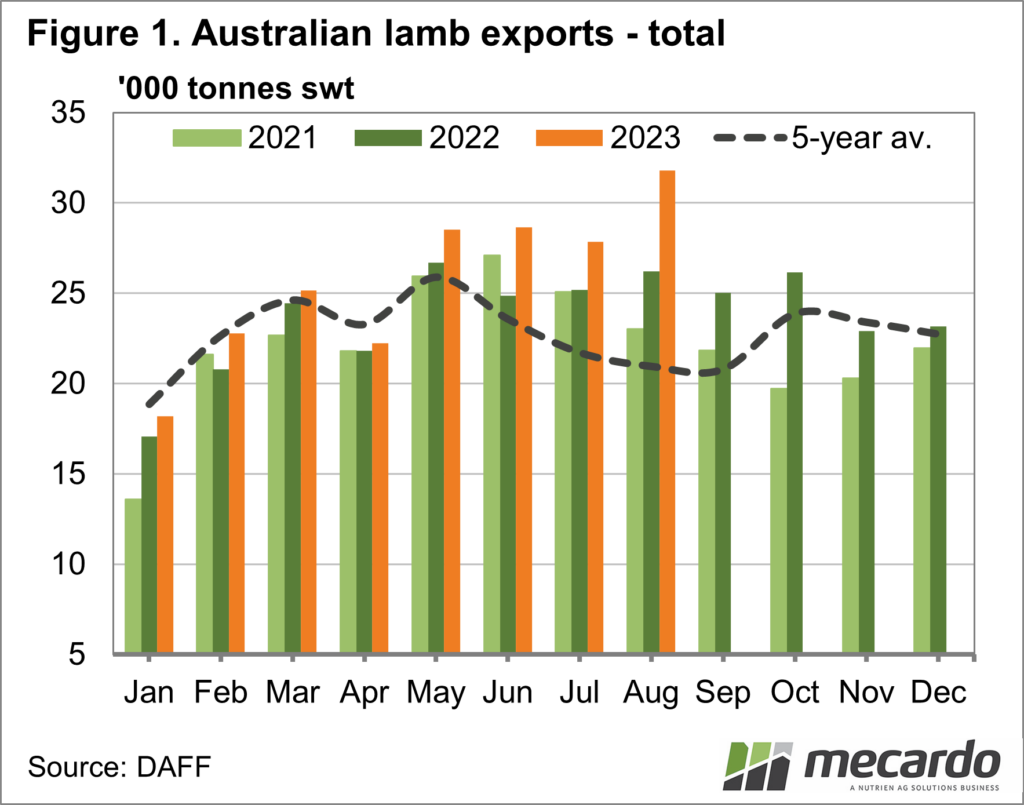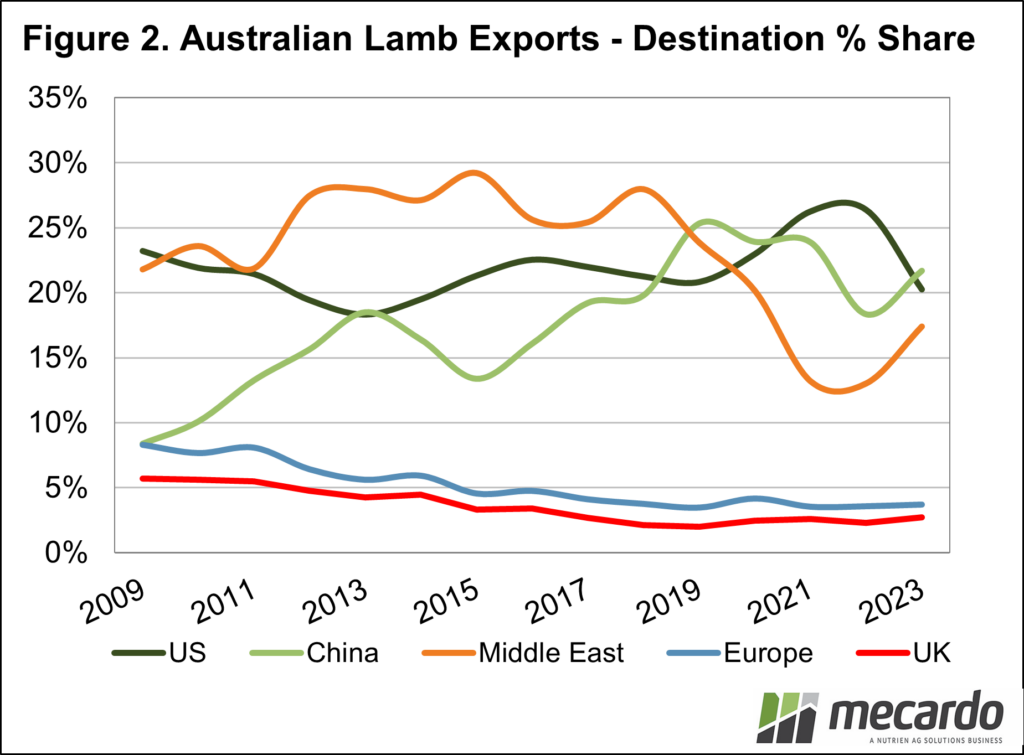Lamb exports continue to be well on track for another record year after a bumper August. Key markets in China and the Middle East have been increasing the volume of Australian lamb they import all year, as their economies and supply chains return to some sort of post-covid normality.
Of course, this has been supported by plenty of availability, with lamb slaughter for the year-to-date already above the total calendar year kill for 2022, no doubt allowing international markets to access the product at a lower price point. In August, 31,799 tonnes of lamb were exported, which was the highest monthly volume to leave Australia on record. It was an increase of more than 14% on the previous month, and 21% more than August 2022.
China has increased their intake the most year-on-year, up 47% compared to the same month last year. The same volume of lamb was sent to China from Australia in June of 2021, and you must go back to October 2019 to find a stronger month for that market. The Middle East was the other strong market for August, with that region collectively taking its highest volume since April 2019.
For the year-to-date, total lamb exports are tracking at 10% higher year-on-year, which if it continues will mean another record-high lamb export volume for Australia. Meat and Livestock Australia forecasts lamb exports to reach 300,000 tonnes this year, which would be a 7% jump on last year, and at current rates, it will surpass this, with more than 205,000 tonnes already headed offshore in the first eight months. For the year-to-August, lamb exports to China are up 38%, returning them to Australia’s biggest lamb market, and increasing their market share by 4% to 22%.
The Middle East has been the other major market that has been on the rise, with the United Arab Emirates up 50% year-on-year, Jordan increasing 86%, and Saudi Arabia, Kuwait and Qatar all up as well. The Middle East has imported just shy of 36,000 tonnes of Australian lamb this year, which puts their volume for the year-to-date just 4% behind the total volume they imported from here in 2022. This demand is being offset however by the US, Australia’s second-largest lamb market which has dropped by 18% year-on-year and lost 6% market share. That being said, August was their strongest import volume month for the year.
What does it mean?
While Australia is well on track to export another record volume of lamb thanks to demand from Asia and the Middle East, this has been facilitated by the rebuilt flock and lower price point in the prevailing market. ABARES predicts the value of lamb exports for 2023-24 to fall by 16% from the previous year, as a decrease in demand from the US and more supply offset the above. This means the export volume growth won’t translate to much support for farmgate prices in the medium term.
Have any questions or comments?
Key Points
- Lamb exports increased 14.5% month-on-month for August, the highest monthly volume on record.
- This takes year-to-date volumes 10% higher than 2022, which was a record-setting year.
- Asia and the Middle East are driving volumes higher, with supply out of Australia plentiful.
Click on figure to expand
Click on figure to expand
Data sources: MLA, ABARES, DAFF, Mecardo














